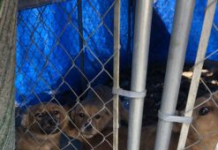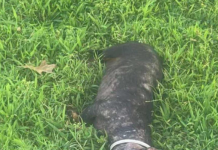The Fluffy French Bulldog is a popular designer dog breed that is a mix of the French Bulldog and another unknown breed, typically another small dog breed. The Fluffy French Bulldog is not a purebred dog and therefore does not have the same pedigree as the French Bulldog. However, this does not mean that the Fluffy French Bulldog is any less loved by its owners! In fact, many people love the unique look of the Fluffy French Bulldog and consider them to be just as cute, if not cuter, than the French Bulldog.
What is the Fluffy French Bulldog?
When it comes to the Fluffy French Bulldog, there is a lot of misinformation out there. Some people believe that the Fluffy French Bulldog is a separate breed from the French Bulldog, when in reality, the Fluffy French Bulldog is simply a variation of the French Bulldog. There are three main types of French Bulldogs – the Standard French Bulldog, the Miniature French Bulldog, and the Fluffy French Bulldog. The Standard French Bulldog is the most common type and is what most people think of when they think of a French Bulldog. The MiniatureFrench Bulldog is smaller than the Standard and has a finer bone structure. The Fluffy French Bulldog is larger than the Standard and has a coat that is more like a poodle’s coat.
The FluffyFrench Bulldog does not have an undercoat, which means that they do not shed as much as other dogs. This makes them ideal for people who are allergic to dog hair or who do not want to deal with excessive shedding. However, because they do not have an undercoat, they are more susceptible to cold weather and should not be left outside in cold weather for extended periods of time.
The lifespan of a FluffyFrench Bulldog is about 10-12 years. They are generally healthy dogs but can be susceptible to some health problems such as hip dysplasia, patellar luxation, and heart disease. It is important to get your Fluffy
What makes them unique?
The Fluffy French Bulldog is a unique breed that is known for its playful and friendly personality. They are also known for their large ears, which can be either floppy or erect. Their coat is usually short and smooth, but they can also have a longer, wavy coat. They come in a variety of colors, including black, brindle, fawn, and white.
What makes them unique is their friendly and loving nature. They are great with children and other pets, and love to play and cuddle. They are intelligent dogs that can be easily trained. They are also relatively low-maintenance dogs that don’t require a lot of grooming.
History of the Fluffy French Bulldog
The Fluffy French Bulldog, also known as the Frengle, is a hybrid breed of dog that is a cross between the French Bulldog and the Beagle. The Frengle was first bred in France in the early 2000s, and they are now becoming increasingly popular in other parts of Europe and North America.
The French Bulldog is believed to have been developed in the 1800s by English breeders who wanted to create a smaller version of the English Bulldog. They were originally used for bull-baiting, but when that practice was outlawed, they became companions and lap dogs. The French Bulldog was brought to France in the 1860s by tourists and soon became a favorite of Parisian society.
The Beagle is a scent hound that was developed in England in the 1500s. They were originally used for hunting hare, but they are now better known as family pets. The Beagle is an active and friendly dog that loves to play and has a great sense of smell.
The Frengle is a relatively new breed of dog, but they are already gaining popularity due to their friendly nature and cute appearance. These dogs make great family pets and are good with children. They are active dogs that need plenty of exercise, so they are not suited for life in an apartment. If you are looking for a fluffy companion that will bring joy to your life, consider adopting a Frengle!
Physical characteristics of the French Bulldog
There are many physical characteristics that make the French Bulldog so special. They have a large head, big eyes, and a short nose. Their ears are also very distinctive, being long and floppy. Their bodies are compact and muscular, with short legs. They have a short coat that is smooth and shiny. The most popular color for French Bulldogs is brindle, but they can also be black, fawn, or white.
Pros and Cons of Owning a Fluffy French Bulldog
There are a lot of things to consider before bringing home a Fluffy French Bulldog. They are an adorable breed, but they come with their own set of pros and cons. Here are some things to think about before making your decision:
PROS:
-Fluffy French Bulldogs are extremely affectionate and loving dogs. They will quickly become a big part of your family.
-They are relatively low maintenance compared to other breeds. Their short coats only require occasional brushing and they don’t need a lot of exercise.
CONS:
-Their short noses can cause respiratory problems, which means they may require special care in hot weather or during periods of high activity.
– Their small size also makes them prone to injuries, so you’ll need to be careful when handling them.
How to Care for a Fluffy French Bulldog
The Fluffy French Bulldog is a unique and popular breed of dog, and it’s important to know how to properly care for them. Here are some tips on how to care for your Fluffy French Bulldog:
- Proper nutrition is essential for all dogs, but especially for the Fluffy French Bulldog. They require a higher protein diet than most other breeds of dogs.
- The Fluffy French Bulldog has a sensitive stomach, so it’s important to choose a food that is easy on their digestive system.
- Exercise is important for all dogs, but the Fluffy French Bulldog needs extra exercise because they are prone to obesity. A daily walk or run will help keep them at a healthy weight.
- The Fluffy French Bulldog sheds heavily, so regular brushing is necessary to keep their coat looking its best.
- Because of their short noses, the Fluffy French Bulldog can have difficulty breathing in hot weather or when exercising vigorously. It’s important to keep an eye on their breathing and make sure they don’t overheat.
Where to Find a Fluffy French Bulldog
If you’re looking for a fluffy French Bulldog, your best bet is to check out local animal shelters and rescue organizations. Many French Bulldogs end up in shelters after being abandoned by their previous owners, so there’s a good chance you’ll be able to find one in need of a forever home.
Another option is to contact breeders who specialize in breeding French Bulldogs. While you may have to pay a bit more for a puppy from a breeder, you’ll be able to choose from a variety of coat colors and patterns, including the coveted “fluffy” look.
Finally, keep an eye out for French Bulldogs being sold by private sellers online or in your local classifieds. Due to their popularity, French Bulldogs are often targeted by unscrupulous breeders and pet stores, so be sure to do your research before making any purchase.
Health concerns for the French Bulldog
French Bulldogs are a popular dog breed, but they’re not without their health concerns. Here are some things to be aware of if you’re thinking of getting a French Bulldog.
French Bulldogs can suffer from a number of health problems, including respiratory issues, allergies, and joint problems. They’re also prone to heat exhaustion and overheating, so it’s important to keep an eye on them in hot weather.
Some French Bulldogs have trouble digesting food properly, so it’s important to consult with your veterinarian about the best diet for your dog. Some dogs may also need special supplements or medications to help with digestion.
Fluffy French Bulldogs are susceptible to a condition called brachycephalic airway syndrome, which means that their breathing is obstructed due to the shape of their head and face. This can lead to difficulty breathing, snoring, and other respiratory problems. Surgery can sometimes help alleviate these symptoms.
Allergies are also common in French Bulldogs. Many dogs suffer from environmental allergies, while others may be allergic to certain foods. If your dog has allergies, it’s important to work with your vet to identify the trigger and find the best way to manage the allergy.
Joint problems are fairly common in French Bulldogs as well. Some dogs may develop hip dysplasia, while others may suffer from elbow dysplasia or luxating patellas (floating kneecaps). These conditions can be painful and may require surgery or other
The French Bulldog temperament
The Fluffy French Bulldog temperament is one of the most important things to consider when thinking about getting one of these dogs. They are a small breed, but they have a lot of personalities. They can be very active and playful, but they also have a calm side. This makes them great for families with kids or for people who live in apartments.
French Bulldogs are also known for being very loving and loyal to their owners. They make great companions and are always up for a cuddle. However, they can also be stubborn and independent at times. This means they need someone who is willing to put in the time to train them properly. But once you have a French Bulldog by your side, you will never be alone again!
Training a French Bulldog
When it comes to training your new Fluffy French Bulldog, there are a few things you need to keep in mind. First and foremost, these dogs are extremely intelligent – so don’t be surprised if they catch on quickly! Secondly, they can also be quite stubborn at times – so patience is key.
Here are a few tips to help you get started:
- Start with the basics – sit, stay, come, down, etc. Once your dog has mastered these commands, you can move on to more advanced tricks.
- Use positive reinforcement – French Bulldogs respond well to treats and praise. Be sure to give plenty of both when your dog does something correctly.
- Be consistent – all family members should use the same commands and rewards when training your dog. This will help to avoid confusion and maintain progress.
- Be patient – as mentioned before, French Bulldogs can be stubborn at times! If you find yourself getting frustrated, take a break and try again later.
French Bulldog exercise needs
When it comes to exercise, the French Bulldog is a relatively low-key breed. They don’t require a lot of activity and are content to lounge around the house most of the day. However, this doesn’t mean they don’t need any exercise at all. A moderate amount of daily activity is still important for their overall health and well-being.
There are a few different ways you can provide your French Bulldog with the exercise they need. Taking them for a walk or playing fetch are both great options. If you have a yard, letting them run around and explore is also a good way to get them moving. Just be sure to keep an eye on them as they can overheat quickly in warm weather.
So how much exercise does your French Bulldog really need? It depends on their individual energy level and health condition. Generally speaking, 20-30 minutes of daily activity should be sufficient. This can be broken up into two or three shorter sessions throughout the day if needed. If your dog seems like they need more than this, consult with your vet to see if there are any underlying health issues at play.
Pros and cons of owning a French Bulldog
Some people love Fluffy French Bulldog, and some people don’t. There are pros and cons to owning any type of dog, but there seem to be a few more pros than cons when it comes to this breed in particular.
One pro is that they are relatively low-maintenance dogs. They don’t need a lot of exercise and can be content lounging around the house all day. They also don’t require a lot of grooming; a quick brush once or twice a week is all they need to stay looking their best.
Another plus is that French Bulldogs are very affectionate and loving animals. They make great companion pets and will form strong bonds with their owners. They do tend to be clingy, however, so if you’re looking for a dog that will give you some space, this may not be the breed for you.
The biggest con of owning a French Bulldog is the cost. They can be expensive to purchase and even more expensive to keep up with their medical needs. French Bulldogs are prone to several health problems, including respiratory issues, spine defects, and hip dysplasia. This means that they often require more veterinary care than other breeds of dogs.
FAQ about French Bulldogs
FAQ about French Bulldogs
Q: What do I need to know about French Bulldogs?
A: Here are some things you should know about French Bulldogs:
Fluffy French Bulldogs are a small breed of dog, typically weighing between 16 and 28 pounds. They are stocky and muscular, with short legs and a long body. They have a short, smooth coat that is typically brindle, fawn, or white in color. They have large, erect ears and a flat face with a short nose. French Bulldogs are friendly, affectionate dogs that make great companions. They are also intelligent and playful, and they can be trained to do tricks. However, they can be stubborn at times and may need firm guidance from their owner. French Bulldogs require daily exercise, but they should not be over-exercised as this can cause health problems. They also need regular grooming to keep their coats clean and healthy.
In light of our discussion, It is very clear to us that the Fluffy French Bulldog is a relatively new breed of dog that has quickly become a popular choice for families and individuals alike. If you’re considering adding a Fluffy French Bulldog to your home, there are a few things you should know about this lovable breed. From their exercise needs to their dietary requirements, the Fluffy French Bulldog is a unique breed that will bring joy and companionship into your life.
Read More Valuable Content in the following:
What You Need To Know About The Fluffy French Bulldog
Gift for dog lovers asobubottle.com
Golden Retriever Puppies Georgia $500
Some of the Best Litter Box Tips Every Cat Owner Wish
How to Brush Cat Teeth At Home
Three things to consider when choosing a leash








